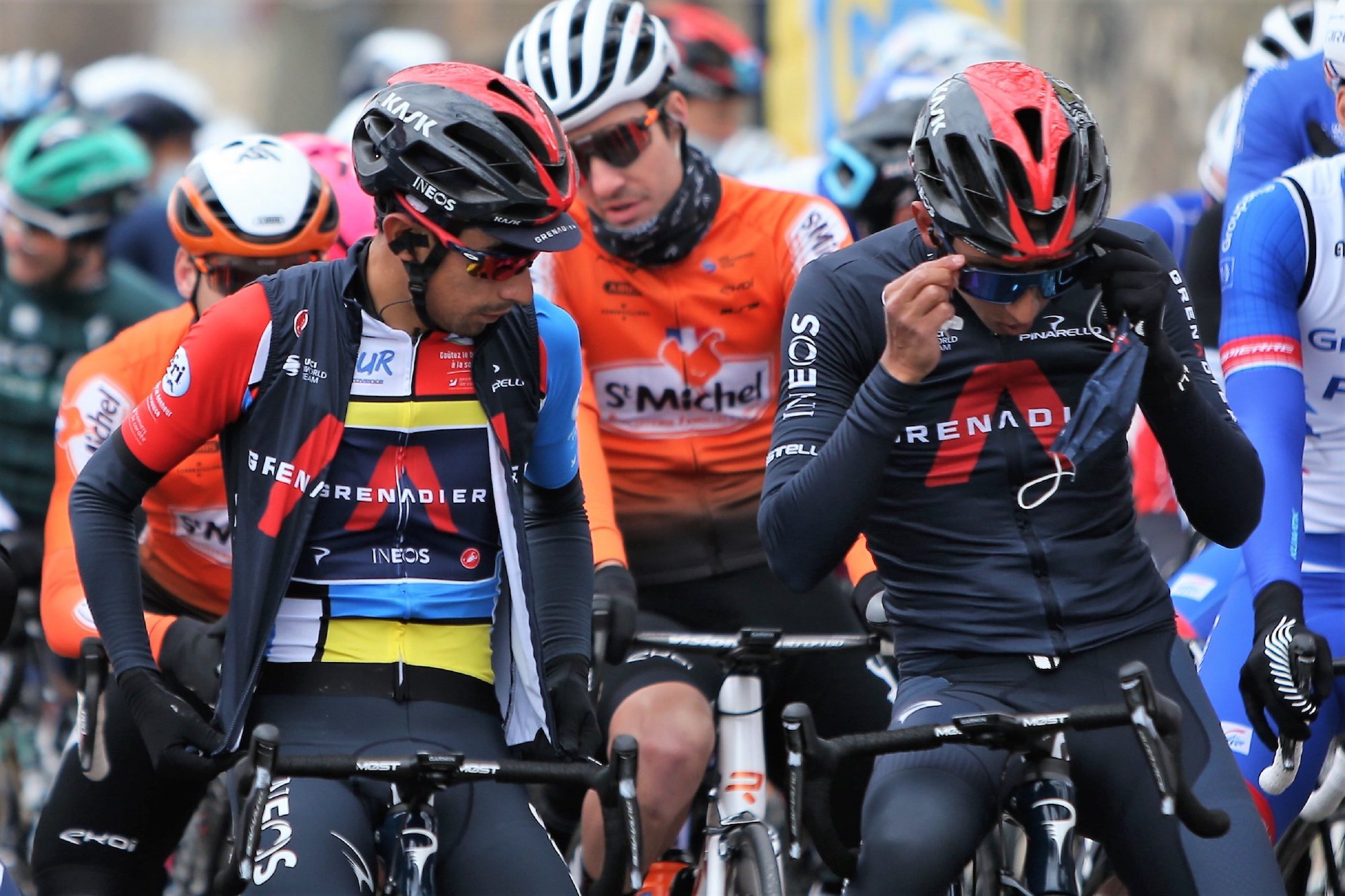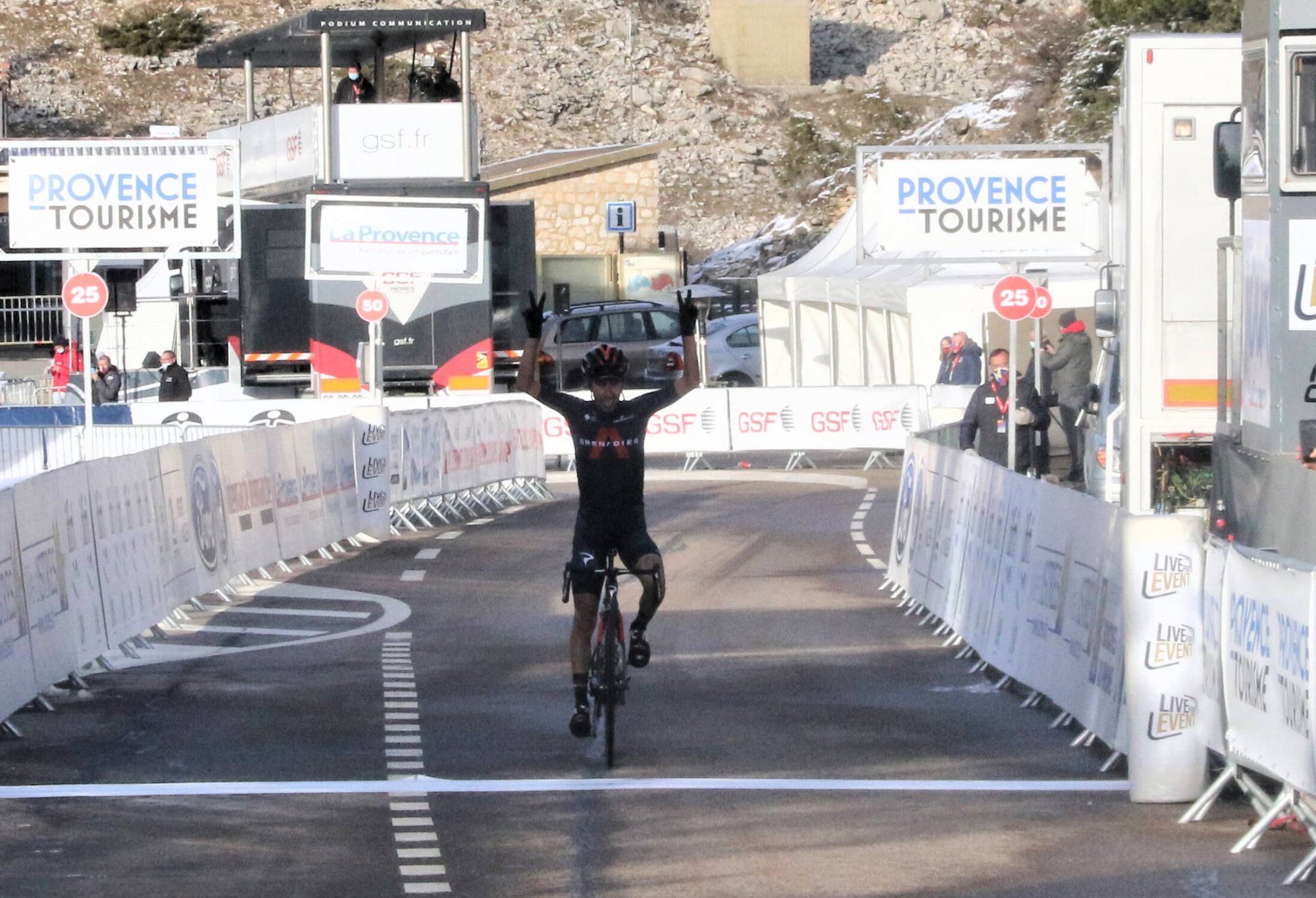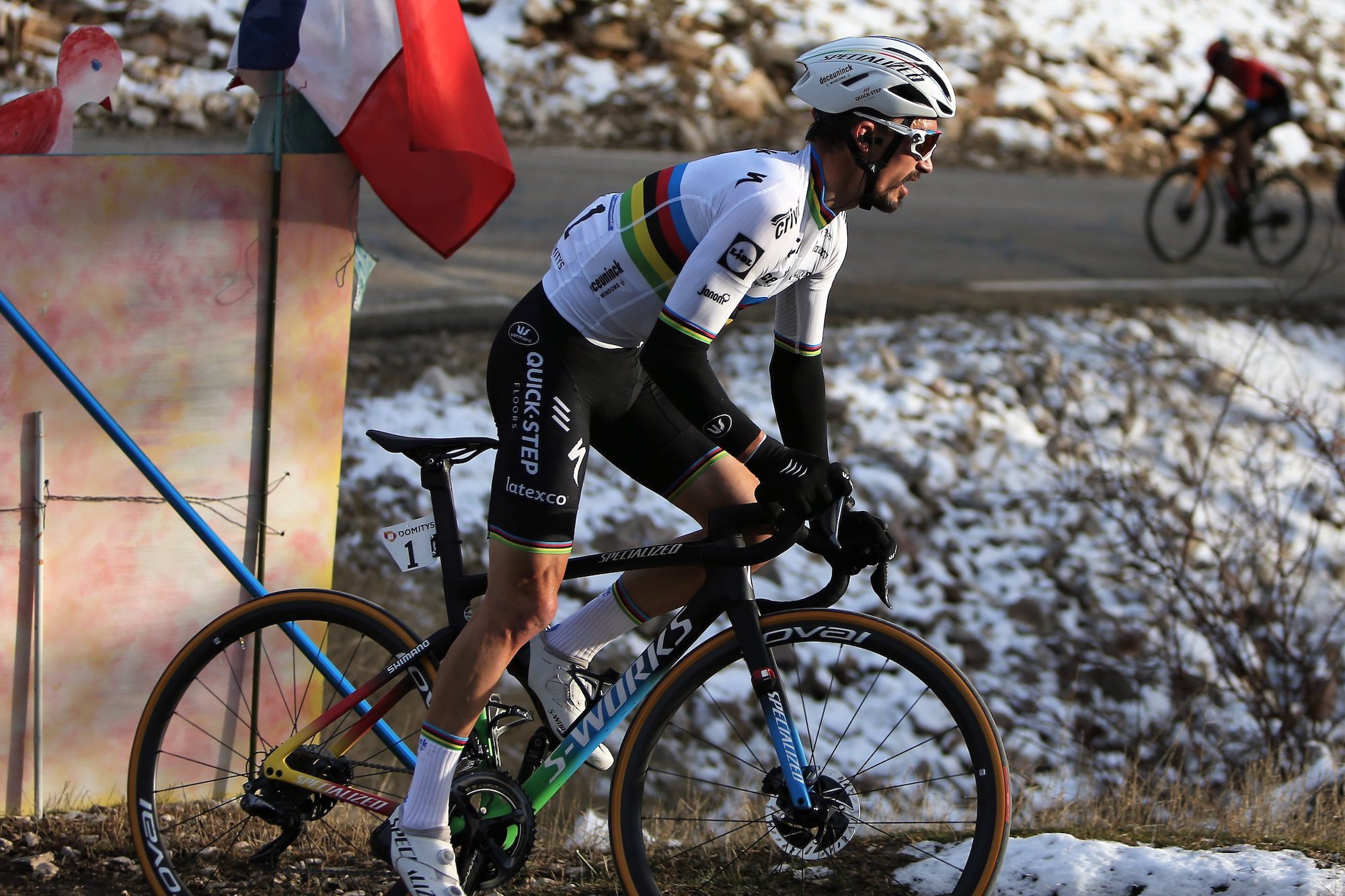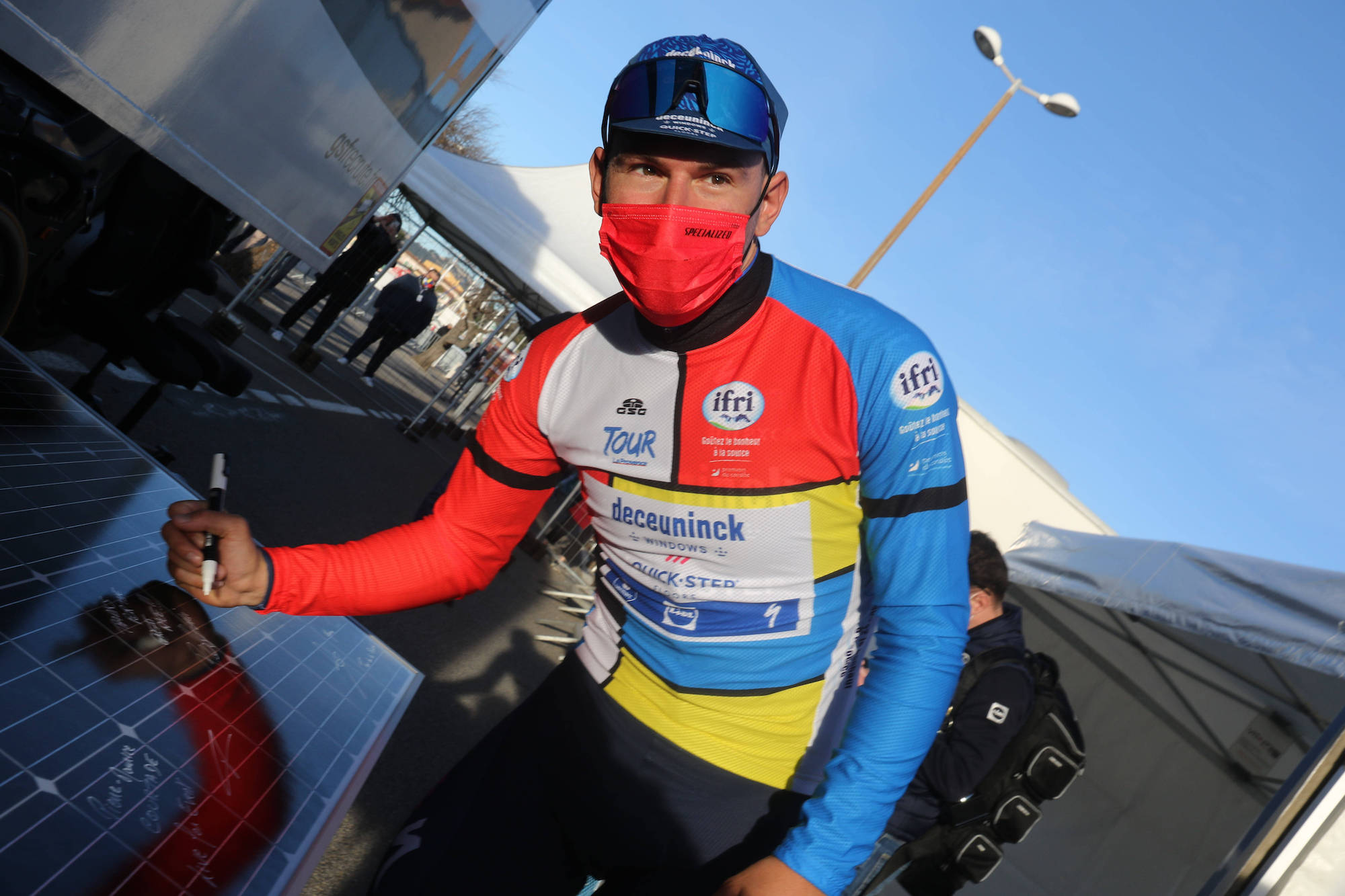Five things we learned from the 2021 Tour de la Provence
The season's first big stage race through up some talking points
Ineos Grenadiers are in rude health

Determined to reassert their precarious status as kings of stage racing, Ineos Grenadiers have begun the 2021 season in formidable form with Iván Sosa and Egan Bernal getting the better of a competitive field at the Tour de la Provence to finish first and third overall respectively.
Their Dutch rivals Jumbo-Visma might not have been present, but this was nevertheless a major statement from the British team. The way they took control of the race on Mont Ventoux was reminiscent of them at their dominant best, while Sosa’s bold race-winning attack several kilometres from the summit was also an exciting indication Dave Brailsford will make good on his promise of a new, more attacking approach this year.
Perhaps the best news of all for the team though was the form of Egan Bernal. In just 12 months the Colombian has gone from defending Tour de France champion whose special talent looked to ensure Ineos’ continued dominance of the sport, to a vulnerable rider whose chronic injuries threatened to persist and damage his future chances of future titles.
Although he explained after the race that he is still riding with pain, nevertheless certainly looked a lot more like his old self in Provence, and the effortless way he covered rivals trying to bridge up to Sosa on Mont Ventoux suggested that he would probably have been strong enough to win the race himself had he not been selflessly working for his team-mate.
Better yet, a major new talent also seems to have been discovered in the form of Carlos Rodriguez. The young Spaniard, who only turned 20 a couple of weeks ago, did most of the damage on Mont Ventoux, upstaging the team’s new star signing Laurens De Plus while setting up Sosa’s decisive attack with a huge, peloton-shattering turn on the front.
Ivan Sosa reminds us of his talent with overall victory
Get The Leadout Newsletter
The latest race content, interviews, features, reviews and expert buying guides, direct to your inbox!

What with all the other young talents that have taken cycling by storm over the past two years, it’s easy to forget just how hyped Iván Sosa was when Ineos first recruited him in the winter of 2019.
His signing to Ineos brought to a close a protracted transfer saga involving multiple teams and agents that demonstrated just how valued and in-demand the Colombian was, but he’s so far only sporadically impressed during his two years for the team. He’s won and finished on the podium in second tier stages like Vuelta a Burgos, Route d'Occitanie and the Tour of Colombia, but has yet to replicate these performances at WorldTour level.
The Tour de la Provence may also be ranked only as a Europe Tour race, but the level of competition this year was virtually of WorldTour standard — to win, Sosa had got the better of riders like world champion Julian Alaphilippe (Deceuninck-Quick-Step), Wout Poels (Bahrain-Victorious), and a powerful Astana line-up that featured the talented Alexander Vlasov, and did so on one of cycling’s toughest climbs, Mont Ventoux.
The next step for Sosa will be to prove he can still beat this calibre of riders in longer, harder WorldTour races, such as next month’s Paris-Nice or Tirreno-Adriatico. Still only 23, this could be Sosa’s breakthrough season.
Alaphilippe is going to be an entertaining world champion

There’s never a dull moment with Julian Alaphilippe (Deceuninck-Quick-Step), and since being crowned world champion last year he’s been making even more headlines than usual.
Picking up from his drama-filled end to 2020, which saw him lose Liège-Bastogne-Liège after a premature celebration, win Brabantse Pijl, and crash into a motorbike at the Tour of Flanders in just his first three races in the rainbow stripes, the Frenchman began his 2021 season by being in the spotlight on every stage of the Tour de la Provence.
On stage one he embarked on a spontaneous long-range attack, before later helping lead out team-mate Davide Ballerini to win the sprint; the following day he crashed in the finale; on Mont Ventoux he was the only rider capable of challenging Ineos Grenadiers and finished third; and on the final stage he managed to sneak a few bonus seconds to move up to second overall.
Although all of these efforts didn’t quite earn Alaphilippe either a stage win or overall victory, it did demonstrate how he’s in scintillating form already. The way he got the better of so many purer climbers on Mont Ventoux in particular suggested that the Frenchman might be set for a special year in the rainbow stripes — and maybe even another outside bid for overall victory at the Tour de France?
Davide Ballerini is Deceuninck-Quick-Step’s latest young star

Almost every year it seems a brand-new talent emerges at Deceuninck-Quick-Step to take the peloton by storm, and Davide Ballerini looks like he could be their breakout rider of 2021.
The 26-year-old was the dominant rider of the sprints at Tour de la Provence, getting the better of top sprinters like Arnaud Démare (Groupama-FDJ) and Nacer Bouhanni (Arkéa-Samsic) to win the opening stage, and only narrowly missing out on stage four’s bunch finish to Phil Bauhaus (Bahrain-Victorious).
What was especially impressive about the Italian was the way he managed to follow-up his opening day victory with another on stage two, on a draggy uphill finish that proved too difficult for all of the other sprinters. Not only does he look like a new sprinting star, he also looks like a contender for different, more challenging terrain too.
Although Ballerini had shown glimpses of what he was capable of last season, such as a stage win at the Tour of Poland, his performances this week suggests he’s taken a leap to a new level this year. With such speed and versatility, look out for him in future bunch sprints, and possibly the Classics too.
Rider safety issue remains at the forefront
While debate over the UCI’s decision to ban the super-tuck and forearm time trial positions rages on, other all-too-familiar safety concerns once again affected the riders during the Tour de la Provence.
On stage one, several riders, including Carlos Barbero, took to social media to draw attention to potentially dangerous road furniture on the route. Then the following day, talented young American Matteo Jorgensen (Movistar) hit the deck on the finishing straight after colliding with a spectator hanging over the barriers.
“Let’s all refocus on the real safety problems in our sport,” he tweeted after the incident. “Barriers, road furniture; NOT RIDER POSITION.”
Whereas few if any serious crashes have occurred as a result of the positions now being banned, crashes involving road furniture remain relatively commonplace, and feel especially urgent in the current climate of paying more attention to safe racing conditions since a series of incidents last season.
If the UCI are serious about improving safety conditions for the riders, then they will do more to address these issues.

Thank you for reading 20 articles this month* Join now for unlimited access
Enjoy your first month for just £1 / $1 / €1
*Read 5 free articles per month without a subscription

Join now for unlimited access
Try first month for just £1 / $1 / €1
Stephen Puddicombe is a freelance journalist for Cycling Weekly, who regularly contributes to our World Tour racing coverage with race reports, news stories, interviews and features. Outside of cycling, he also enjoys writing about film and TV - but you won't find much of that content embedded into his CW articles.
-
 'This is the marriage venue, no?': how one rider ran the whole gamut of hallucinations in a single race
'This is the marriage venue, no?': how one rider ran the whole gamut of hallucinations in a single raceKabir Rachure's first RAAM was a crazy experience in more ways than one, he tells Cycling Weekly's Going Long podcast
By James Shrubsall
-
 Full Tour of Britain Women route announced, taking place from North Yorkshire to Glasgow
Full Tour of Britain Women route announced, taking place from North Yorkshire to GlasgowBritish Cycling's Women's WorldTour four-stage race will take place in northern England and Scotland
By Tom Thewlis